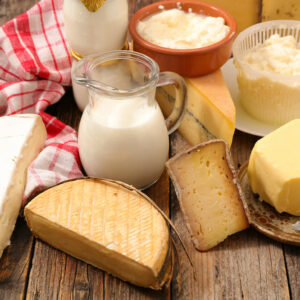Top 10 kitchen remodeling errors to avoid

Kitchen renovation is an exciting prospect, as it can make the space more functional and visually appealing. The project could involve major changes like knocking down walls, changing countertops, and adding other elements like a breakfast bar and more cabinets. One may also consider changing the backsplash, flooring, and appliances. So, remodeling the kitchen can be a huge undertaking. To ensure it goes as smoothly as possible, here are a few mistakes to avoid:
1. Skipping planning
Proper planning is one of the most overlooked aspects of a home improvement project. But, for a successful renovation, one needs to have a vision and a definite end goal, preferably on paper. The vision needs to go beyond just how the space would look and take into account how the new kitchen will serve the inhabitants. Would the kitchen be only used for cooking, or will it also serve as a hangout spot and a breakfast or dining nook? One should assess their requirements and list them, set a budget, and list goals before purchasing materials, hiring contractors, and knocking down the existing structure.
2. Underestimating costs
Another huge mistake is setting the wrong budget. One doesn’t need to know the exact expenses beforehand, but they should have an estimate of the cost and leave a little room for the budget to stretch. The wiggle room will ensure that the project is not left unfinished in case of unexpected expenses. This is because, more often than not, one may end up spending more than their initial renovation budget. So, one should set a budget only after checking the prices of countertops, cabinets, flooring, appliances, and other necessities.
3. Selecting appliances after cabinets
One may put off choosing appliances for the kitchen until after they get the kitchen cabinets installed. This is a problem. The choice of appliances, especially big-ticket ones such as refrigerators and dishwashers, is crucial. So, after getting the cabinets installed, if one wants a specific appliance that does not fit into the allocated space, it would be disappointing. So, a better move is to choose the appliances, get their exact measurements, and then get the cabinets and shelves built accordingly. This way, the cabinet construction and appliance installation can go hand-in-hand.
4. Messing up the flooring order
When remodeling a kitchen, the order of each step plays a crucial role in determining the end product. For example, professionals suggest installing or replacing the tile and wooden flooring before fixing the cabinetry in the designated spaces. Doing the opposite could mean if the floors peak or are damaged, they would be harder to extract and may damage the new cabinets.
5. Choosing the wrong floors
Selecting the wrong flooring materials is a key mistake to avoid. The decision should be based on the kind of texture one likes, ease of cleanup and maintenance, and budget. For instance, if one has kids, one may want to avoid excessively smooth and slippery floors.
6. Improper wiring
Wiring mistakes can not only make daily lives difficult but also become a safety hazard in the long run. Kitchens need to have about a few accessible outlets of 20 amp. Further, the wiring is sealed and protected with a circuit protector to eliminate the risk of accidents and electrical fires. DIY can seem to be cost-effective, but when dealing with wiring setups for the first time, one should engage the services of an electrician to minimize the danger.
7. Buying the wrong items
Who wouldn’t want to grab deals? However, when buying critical items like plumbing equipment, electricals, and appliances online, one might want to avoid letting price govern the purchase decision. It is important to choose the right vendor and reliable products so as to avoid getting a damaged or sub-par product for their home. One may also want to consult their contractor before buying products online.
8. Not planning deliveries properly
When the material and products are being ordered from different vendors, one needs to check the delivery time before placing the order. One needs to have a delivery timeline in place for all the purchases. For instance, one does not want to end up with huge gaps in the delivery of countertops, appliances, and cabinetry, as that would delay the project.
9. Taking shortcuts
One should carefully evaluate if painting the cabinets is all they need to make them align with the rest of the renovations. Painting might be a great shortcut to give surfaces a new look. But it does not enhance their functionality. Further, one needs to consider if the cabinet materials are paintable. Then, they should also assess if replacing the cabinet shutters and kitchen doors is a better idea to make them easier to use and match the new kitchen design. Compromising on functionality in favor of cost might be an unwise decision in the long run.
10. Underestimating storage
Storage is a key aspect of any living space. While renovating, one might want to add to the storage space to ease organization. So, one should take into consideration the cookware, serve ware, and dinnerware required to store in the kitchen. In addition, one should account for the space needed to store appliances like blenders, coffee makers, food processors, air fryers, and more.



